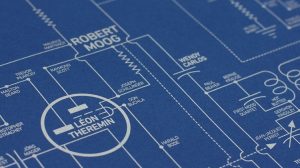 In a former life, as a practitioner of large scale media analysis programmes for major brand owners, governments and NGOs, I found it a continuing source of frustration that we got so little true feedback from our clients about the value of the measurement results we were delivering, despiute our best efforts. It too often seemed that the only hard insight we got about how well we were servicing our clients was whether our contracts were renewed or not.
In a former life, as a practitioner of large scale media analysis programmes for major brand owners, governments and NGOs, I found it a continuing source of frustration that we got so little true feedback from our clients about the value of the measurement results we were delivering, despiute our best efforts. It too often seemed that the only hard insight we got about how well we were servicing our clients was whether our contracts were renewed or not.
An accurate metric, of course, but one that gives little opportunity to any supplier to re-align and improve their services.
As in any business, improving our commercial performance was a continuous process. Generally speaking, it involved the usual (and of course necessary) variables of increasing revenues whilst driving down costs.
But this focus can lead to clients sometime being badly served. Suppliers of PR and communications measurement can find themselves trapped between needing to differentiate themselves by promising excellent customer service, coupled to insight and speed, whilst keeping a tight lid on the costs of delivering programmes to ensure they’re price competitive.
However, whilst some of the costs of doing business in media analysis have broadly declined in recent years through the growth of digital content acquisition, automated analysis, self serve dashboards etc., these cost savings tend to be front-loaded, production elements. The true value to users of communications measurement rests in its ability, as one very savvy client of mine put it, to “tell me something I don’t already know”. But this kind of insight tends to rely heavily on human resources; analysts to interpret trends and data anomalies, consultants to provide business-relevant contextualisation of data, researchers to develop hypothesis testing methods, and other intensive time and human resources. And these insight- and action-driven resources are both relatively scarce, quite expensive and very often not seen as a “must have” by clients when setting up their programme. Measurement companies can often set client expectations way too high, in their enthusiasm to close the deal…
I set up The Measurement Practice largely because my 25+ years’ experience at the coal face of delivering media analysis demonstrated that measurement companies by and large have not been great investors in their clients. It’s all too often left to the client to tease out the lessons from the data. The human resources that can help clients use data so that it’s a genuine driver of business performance, strategic thinking and decision support are not made available, simply because suppliers and clients both fear the cost implications.
As The Measurement Practice mission is is all about helping clients derive greater value from their measurement and research programmes, we thought that now would be a good time to to benchmark how clients felt about the value and use they received from their programme investments.
So we’ve crafted a unique 2 minute “Pulse Check” survey along with our clever question-asking friends at Q&R to test this hypothesis. If you’re a measurement or research user and would like to have your view heard in this unique study, do keep an eye on our Twitter and LinkedIn feeds for our imminent PulseCheck launch announcement. We plan to run the PulseCheck every 6 months or so, as a way to measure suppliers’ overall ratings over time.
The PulseCheck really does take less than 2 minutes to complete and it will help us all – clients, suppliers and us – understand just what measurement users think about their suppliers, so that we can create a blueprint for best practice! I do hope you will find time to complete the survey when it’s launched…